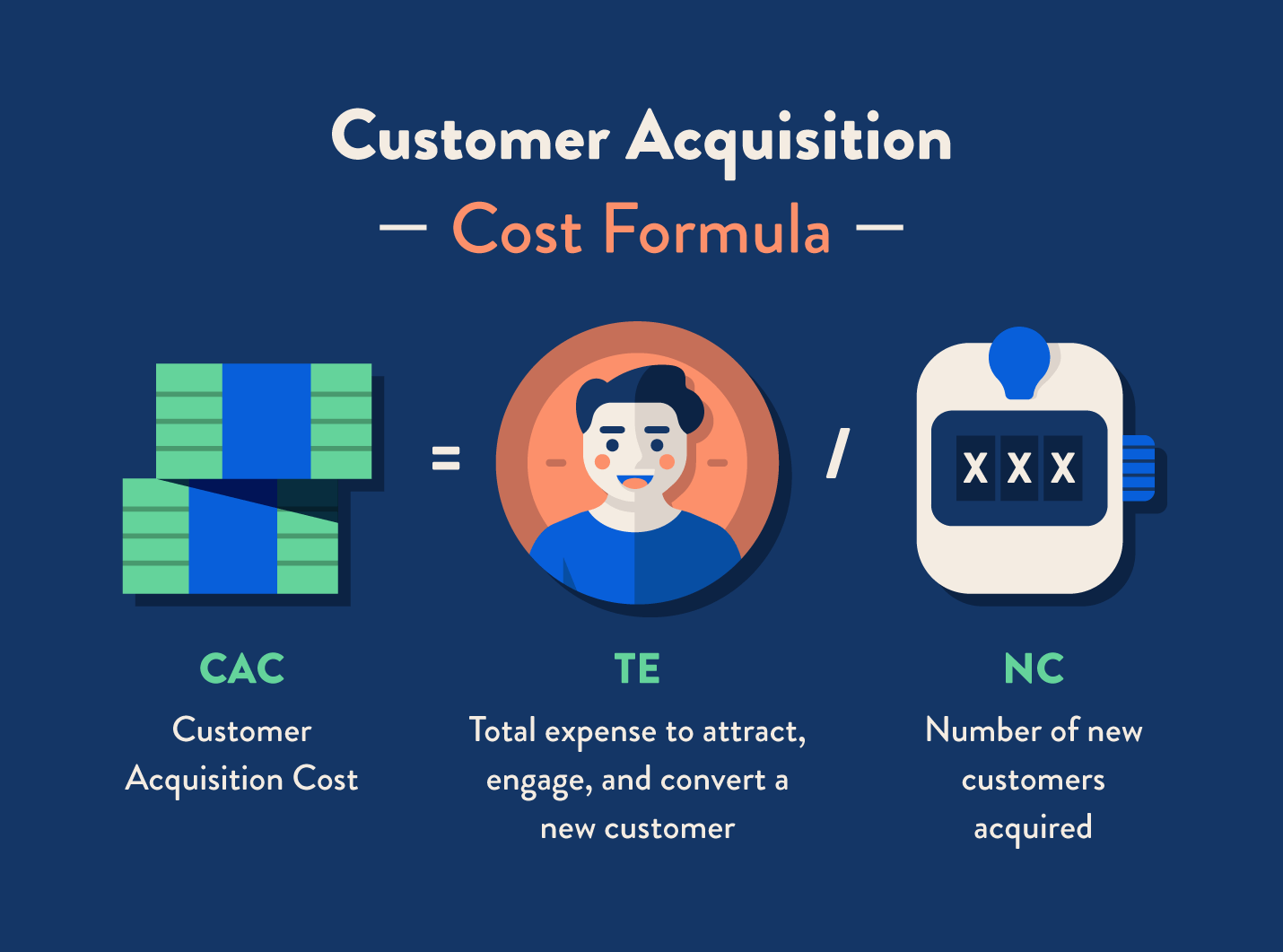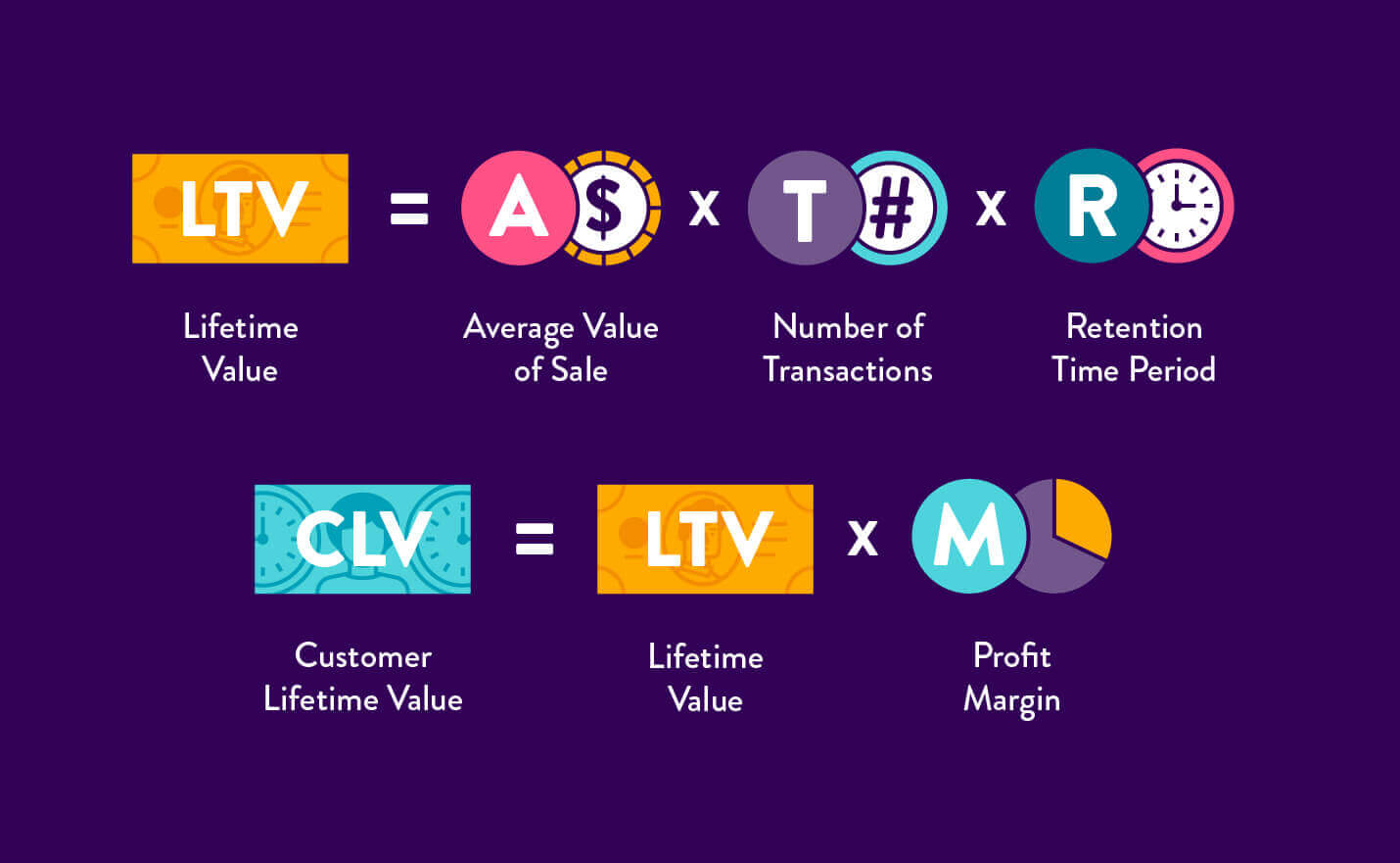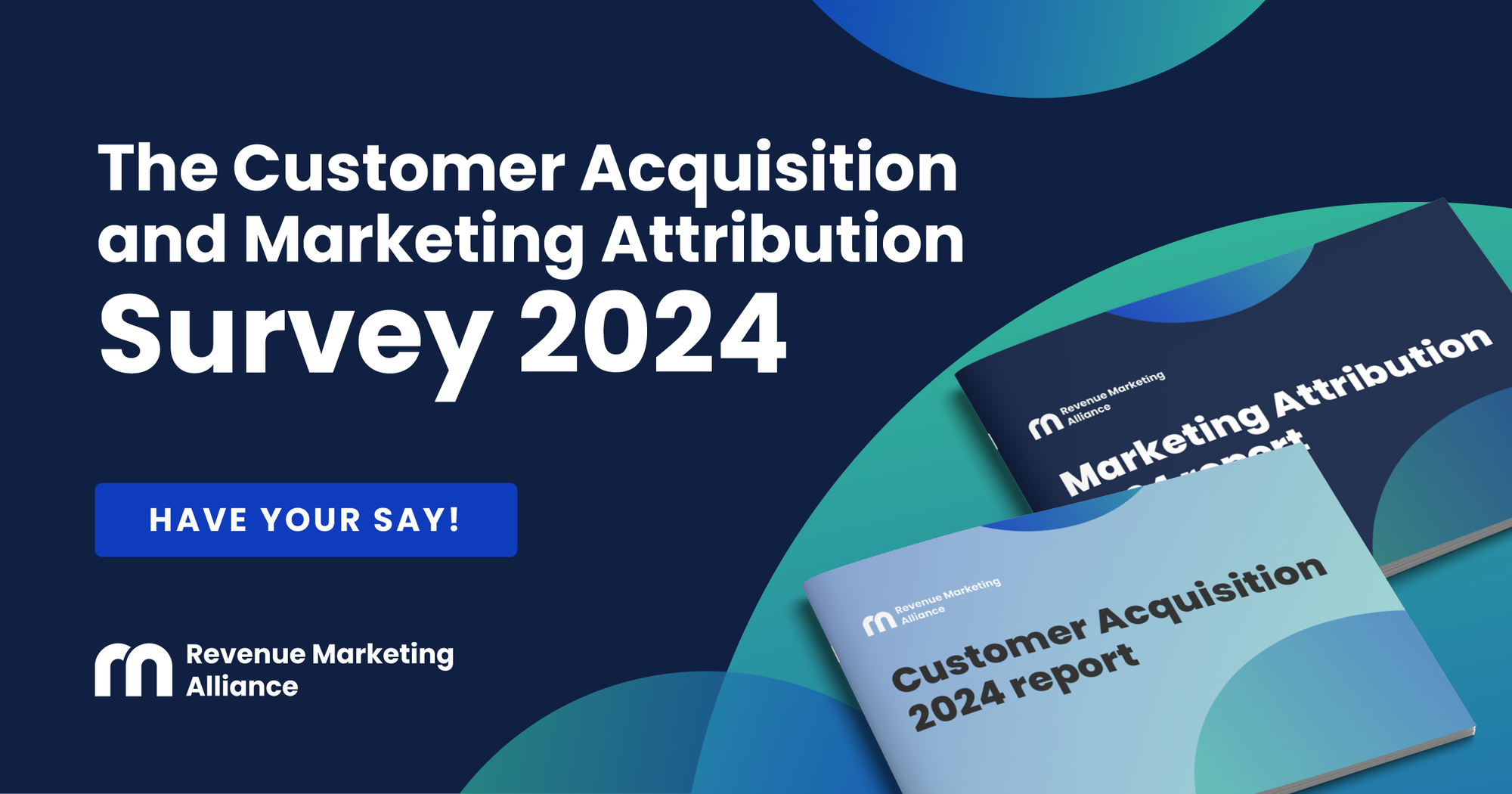Objectives and key results (OKRs) are a pretty common talking point in the B2B marketing world, and we see tons of B2B marketers asking how they should, or could, measure their performance.
If you’re new to the world of customer acquisition and wanna get your head around the math and strategies, stick with us till the end - we’ve got it all covered in this article:
- What is customer acquisition?
- The customer acquisition funnel
- Customer acquisition strategies
- How to optimize your customer acquisition strategy
- Customer acquisition cost formula
- What’s a good customer acquisition cost?
- How to reduce customer acquisition costs
What is customer acquisition?
At its most simple it’s the process of acquiring new clients or customers, and whether you work for a scrappy, small-scale start-up or a huge, well-established corporation, gaining new customers is the aim of the game.
It may sound as simple as its name but the process of acquiring new customers is less of a side quest and more of a hero’s journey - where you, the swashbuckling B2B marketer return victorious, ready to reap the rewards of everything you've learned along the way.
This sounds a lot like lead generation you're probably thinking, well actually, there’s a difference, and that difference lies at the bottom of a funnel.

But first, what is the purpose of an acquisition strategy?
What is the purpose of an acquisition strategy?
An acquisition strategy in marketing refers to the methods and tactics a company uses to attract new customers or users. The main goals of an acquisition strategy are typically to:
- Increase brand awareness and reach new audiences
- Drive traffic to a company's website, store, or other channels
- Generate leads and convert prospects into customers
- Rapidly acquire new users or customers to fuel growth

The customer acquisition funnel
Lead generation is the difference between someone who’s curious about a product or a service and someone who’s ready to purchase.
In the biz, we visualize the customer journey as a funnel (no one said we were normal) and as your target audience moves through the funnel to take on their final form as customers, they:
- Gain awareness of your brand.
- Move your product or service into the consideration pile in the filing cabinet of their brains.
- And right at the bottom of the funnel, they shoot out, like tiny, thrill-seekers on a tunnel slide, arms up and ready to join the pool of happy customers you’ve already acquired.
Customer acquisition strategies
So we’ve talked a little about the customer's journey, but what about your journey as a marketer? What do you need to do to entice customers into the funnel? Don’t worry, we’ve got you covered.
We’ve got free strategies, paid strategies, inbound and outbound strategies and best of all, these methods can be used on a small scale or a much larger scale, the sky’s the limit.
Content marketing
Content marketing is a brilliant way to acquire new customers for all types of businesses. In a world full of false promises and dwindling consumer trust, content marketing is a great way to share how authentic your business is.
You love what you do and want to share your expertise and enthusiasm with everyone, honestly, what is more wholesome than that?
For this reason, blogging is a great option, it allows you to explore all kinds of different topics and most importantly engage with your audience, whether that’s through an article they can share or bookmark for later or a question you can answer in the comments, blog posts can create an enticing, clickable call-to-action.
If you already have a blog, you could generate more organic search traffic to your website by doing very little, seriously, the absolute bare minimum; sounds good, right?
A lot of older blog content languishes at the bottom of a time-based feed, never to be read again, archived deep into the website's architecture. But what if we told you, you could upcycle that content like an old chest of drawers, and rebrand it as new?
Older posts tend to get a lower share of internal PageRank unless they have a lot of backlinks from external web pages, they barely rank in a search engine. One quick solution is to change the date of the blog post and republish it, taking the post to the very top of the feed and giving it a significant boost, Page Rank-wise.
If you add in some extras or update any old stats or references, you can re-promote it on social media and earn even more backlinks from external websites.
If you want to visualize an idea or a product demonstration for potential clients, video is the obvious route, with cheaper, higher-quality cameras more readily available, you don’t have to be Spielberg to make decent video content.
Content is infinitely more important than quality. An interesting idea or creative, offbeat clip will ultimately generate more shares and engagement than a dry, corporate, instruction video, no matter how much it costs to produce.
Social media
Social media marketing consists of two methods: organic and paid. Organic social media is most useful for boosting brand awareness, developing a company personality, and sharing content you’ve published elsewhere (like from your blog or videos).
When done right, social media can inspire customers to become one of your best marketing tools, sharing the company's content and recommending products or services to other users.
It does have its drawbacks though, posting organically can sometimes feel like yelling into the void, except that void is filled with 3.8 billion people who are simultaneously being yelled at by billions of other companies at the same time. This is why it’s absolutely vital you’re yelling at the right network of people - it’s that old adage of knowing your audience.
LinkedIn might seem like the natural choice for B2B social media, but it’s not the be-all and end-all. If you’re targeting businesses staffed with plenty of Millennials, you should definitely include Facebook and Twitter, and we’re getting to the point that Gen Zers are going to be running companies, so if they’re the ones you’re after, head over to Instagram or TikTok and lip sync to some Drake while doing the toosie slide (don’t do that, we’re totally joking).
Depending on your budget and audience, paid social media might be a better option for your business. It’s an easy way to get your content out there in front of an audience without having to build a following.
While sponsored posts on LinkedIn, Facebook, Twitter, or Instagram get your content out there, LinkedIn Dynamic Ads will allow you to customize your ad and targeting specifically to the goals you want to achieve (audience growth, lead generation, website traffic, and more).
Search marketing
Organic search marketing, also known as search engine optimization (SEO), is also available in two flavors: organic and paid.
By optimizing your content it’s a ton easier for your target audience to find. Most people click on the first search results offered to them, after all, who has the time to go scrolling through pages and pages of results?
By using SEO you're creating content that appears right at the top of the search engine results page (SERP) so consumers can click on your content instantly.
There’s a lot that goes into SEO, but these are a few basics to get you started.
If you have the time to learn SEO strategies, stay up to date with trends, and optimize your blog posts — you’ll find your content ranking higher than ever before.
On the other hand, if you have neither the time nor the resources, paid search marketing (pay-per-click or PPC) is a great alternative, it’s basically advertising on a Google SERP itself. PPC allows you to create a search result and pay for it to show up with organic results, increasing your chances of being found by searchers.
Email marketing
Email marketing might seem a bit out of date, but it's actually still a really effective way to gain customers.
It’s a great way to connect with your audience, you can promote events, offers, and discounts, and you could even celebrate company milestones with your customers or clients and offer them special discounts to mark them.
It's also a really helpful way to keep an eye on your recipient’s behavior, watch which links they click in the email, monitor which sections received the most engagement and you can learn what your subscribers are really interested in and tailor your campaign accordingly.
And of course, there are a ton more options out there too, like:
- eBooks
- White papers
- Co-branded content
- Partnerships
- Guest posting
- Affiliate links
- Answering questions on Quora/Reddit
- Building custom tools or apps.
How to optimize your customer acquisition strategy
So now you have some solid strategies under your belt, here’s some advice on how you can optimize them for maximum impact and longevity.
Think long term
A sustainable strategy is a wise investment, whether you're investing, time, money, or people, you want to make sure that whatever you're doing will work in the long run.
We’ve already talked about blogging as a way of acquiring new customers, but again this is a great example of a sustainable strategy, as long as you have the tools and resources in place one or two posts could be bringing organic traffic to your page for months or even years. When you compare that to advertising, the cost is considerably less and so is its lifespan.
Always be flexible
The way customers respond to marketing and sales is constantly evolving and it’s more important than ever to keep your strategies as flexible as possible.
It takes a lot of trust to push potential customers into the buyer zone when it comes to B2B. For a business, wasting resources on ineffective products or services could lead to major repercussions, such as loss of investors, job losses, or even companies collapsing completely.
You need to adapt your marketing strategy directly to your target customers, helping them build trust in you in an organic, adaptable way. There’s no one-size-fits-all when it comes to landing those major clients.
Target your customers
Customer acquisition can be a huge waste of time and resources if you're not targeting the right market. If you can define your target audience you can find out their needs and meet them, if you can narrow down your target market you can find out how they consume media and tailor your market strategy accordingly.
Diversify your strategies
Diversifying your strategy and using different acquisition tactics means you have a better chance of reaching new customers and generating leads.
There’s also very little risk involved if one channel fails you can move the funds over to a better performing, tried, and tested method safe in the knowledge it really works.
Customer acquisition cost formula
So you’re ready to put your all into gaining new customers with all of the optimized strategies we’ve suggested. What comes next? Well, now we’re going to calculate your customer acquisition cost formula.
What’s that you ask? Customer acquisition cost or CAC is, quite literally… the cost of gaining a new customer or client. But how and why do you calculate that cost?
Well, it’s actually a really useful tool to determine what resources you need to expand your customer base and still make a decent profit. You divide all of the money spent on acquiring customers (marketing, sales expenses, etc.) by the number of customers you gained in the period that money was spent.
For example, if you gained 10 customers and spent $1,000 on a targeted LinkedIn ad in one week, your customer acquisition cost would be $100.
Customer acquisition cost (CAC) $1,000 ÷ customers acquired (CA) 10 = $100

For a more in-depth look at CAC, you’d include all of the costs associated with marketing spend, including everything from salaries to the cost of the pens you used to jot down ideas.
Reducing your customer acquisition cost means the business is spending money more efficiently and should see higher returns in profit. It’s the perfect way to measure your customer acquisition success.
What's a good customer acquisition cost?
A Good Customer Acquisition Cost varies by industry, the individual business, and the strategies used. But a good point of reference is comparing your CAC to your Customer Lifetime Value (CLTV).
"But how do I calculate the CLTV?" We hear you cry.
Now the numbers will probably be a lot bigger when it comes to B2B, but let’s use McDonald’s as an example and some data from a report we just made up. We measure the weekly purchasing habits of 10 customers and then average their total values together. Using this information we can then calculate the average lifetime value of a McDonald’s customer. Here’s the process, step by step:
Calculate the average purchase value
First of all, we need to measure how much the customer spends every time they pass through those golden arches, this is their average purchase value.
For example, if we visited McDonald’s three times in one month and spent around $12 (in the interest of transparency we have absolutely done this), our average purchase value would be $4.
Once we’ve calculated our average purchase value, we then repeat the same process for the other 10 customers. After that, we add each average together and divide that by the number of customers surveyed to get the average purchase value.
Calculate the average purchase frequency rate
Next, we need to measure the average purchase frequency rate. Basically, we need to know how many visits the average customer makes to McDonald’s in a week. The average observed across our fictional customer report is 3.2. This makes the average purchase rate: 3.2.
Calculate the average customer's value
Are you still with us? Good! Because this is where it gets a bit technical. Now that we know how much the average customer spends and how many times a week they visit McDonald’s, we can determine their customer value.
Looking at all 10 customers individually, we multiply their average purchase value by their average purchase frequency rate. This tells us how much revenue a customer could generate for McDonald’s in one week. We need to repeat the calculation for all 10 customers, we then average all of their values together to find the customer's value.
Individually, ours would look something like this: $4 x 3.2 = $12.80
Calculate your customer's lifetime value
Once we know the customer value as well as the customer lifespan, we can use this to calculate the Customer’s Lifetime Value(CLTV). First, we need to multiply our average customer value by 52, this is because we’re measuring their habits weekly.
Then we multiply this number by the customer lifespan value (which is how long our customers have been customers, in this case, we’ll say five years) to get our CLTV result.

CLTV = Customer Value x Average Customer Lifespan
So for our imaginary McDonald's customers, the CLTV result is $3,343 (52 x 12.86 x 5= $3,343).
So now we have our CLTV and CAC results, it's easy to find the ratio between them. Just divide the CLTV by CAC.
So if the customer lifetime value is $3,343 and the expenses for acquiring a customer are $1,000, then the CLTV: CAC ratio would be 3.3.
So there you have it! We’ve scratched the surface of customer acquisition and flexed our math muscles.
How to reduce customer acquisition costs
When it comes to getting new customers, companies obviously want to keep their costs as low as possible. There are a bunch of smart ways to make that happen.
First, dig into the data - see which marketing channels and campaigns are actually driving conversions and at what cost. Then, shift more budget to the stuff that's working best and producing results efficiently.
Next, don’t underestimate the power of organic growth. Word-of-mouth, referrals from existing customers, social sharing - that stuff brings in new buyers without big ad budgets. Offer incentives to get people to share and refer others.
Also, think about giving stuff away - like free trials or freemium models. It lowers the barriers for customers to try you out. And once they see your value, you can upsell them.
Of course, you want to nail the basics too - like SEO and conversion rate optimization. Creating awesome content and making sure your website converts visitors well is marketing 101.
It also pays to get a little sales-y with people who’ve come to your site before - retarget past visitors and leads with ads and emails. Give them that extra nudge to come back and convert.
And don’t forget the power of partnerships - influencers, affiliates, etc. Work with people who already have an audience to get in front of new networks.
Psst... now's your chance to influence the most important conversations in revenue marketing
How do leading marketers drive growth? What channels attract and convert customers? Where should budgets be allocated? What metrics matter most?
Our groundbreaking 2024 Customer Acquisition and Marketing Attribution Survey will reveal the inner workings of today's state-of-the-art revenue engines. And you can help uncover the key insights.
The insights gained will be invaluable for staying ahead of rapid changes in 2024.
This is your exclusive opportunity to shed light on:
- Current marketing attribution models and challenges
- The evolving customer journey to purchase
- How teams track and optimize funnel performance
- Emerging strategies to connect with modern buyers
- Key focus areas for growth in 2024
… And a whole lot more.
Take the survey, and at the end, receive a comprehensive Customer Journey framework slide deck to help you and your team acquire more customers with less stress! 👇



